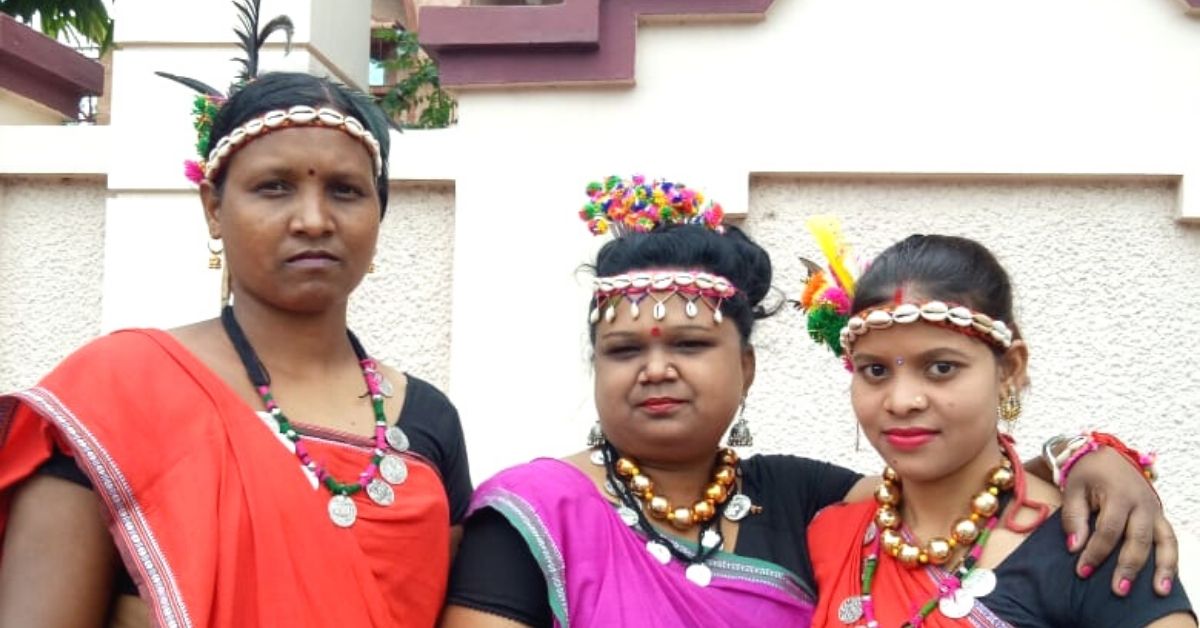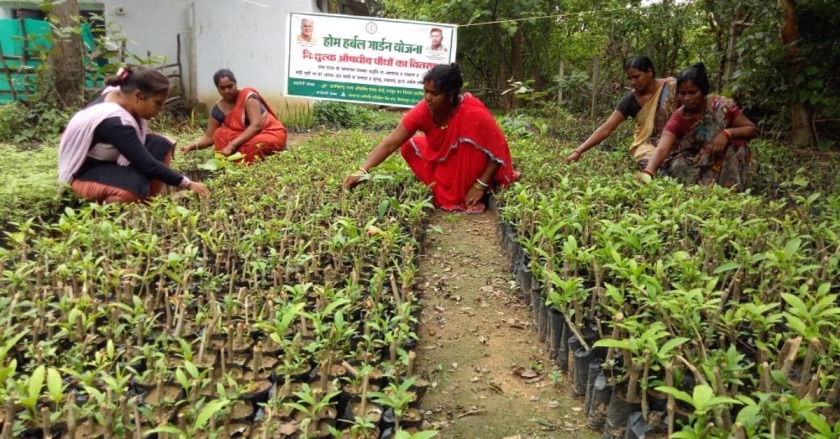Chhattisgarh Botanist Keeps Ancient Wisdom Alive, Trains 400 Women on Medical Plants
Sarojini Goyal, from Chhattisgarh, trains women to grow conserve traditional medicinal plants like Brahmi, Giloy, Ashwagandha, Neem, Shatavari and other species for traditional healers

The Amarkantak village of Chattisgarh, located near the origin of Narmada River, has rich biodiversity, with over 1,500 species of medicinal plants. Chhattisgarh is called India’s herbal state for this very reason.
As a child belonging to a tribal community in the state, Sarojini Goyal spent most of her time collecting medical plants from the forest. She would carry these plants and fruits home, where they would be cleaned and undergo various processes to make concoctions by her father.
“My grandfather and father, the late Pritamlal Goyal, were traditional healers in the village, and helped treat people with primary ailments like cough, cold, fever, diarrhoea, and other diseases,” says the 39-year-old.
Science and tradition combine
Science and tradition combine
Carrying forward the traditional knowledge her family possessed, Sarojini has not only given it a scientific touch, but also spread this knowledge to 300 women and created a livelihood for them.
“I knew the region is a treasure for medicinal plants, and also what worked for patients. But there was no access to the scientific study of these plants that could upgrade my skills and extend my knowledge,” Sarojini says.

In 2010, she got in touch with the Traditional Healers’ Association, and participated in a botany course, supported by the United Nations Development Programme (UNDP), as well as the state government. A United Nation report states that about 65 per cent of rural India depends on traditional methods to address primary health diseases, which makes the UNDP invest in protecting and conserving knowledge.
After a year-long course, and braced with botanical knowledge, Sarojini decided to start a Self Help Group (SHG) with other women in the village. “The others were aware of the plants, but they’re also was a need to grow and conserve them scientifically. They needed to be harvested without damaging them,” she says.
If the plants were damaged, it would affect production next year. “Hence, we also started creating nurseries of medicinal plants herbs in the kitchen gardens. We could sell these plants or concoctions made out of them to earn a livelihood,” she adds.
Sarojini trained women to adopt a scientific approach to harvesting, cleaning, and processing medicinal plants. She gave free saplings of plants like tulsi, giloy, ashwagandha, neem, Shatavari, adulsa, and other endemic species for these women to grow. The powders made from these plants are dried and then packaged, and the medicines are sold to the forest department.
From one SHG in 2011, Sarojini has created 60 more, and trained around 450 women, earning a turnover of Rs 15 lakh a year. “We all get our due share of the work, and women earn at least Rs 5,000 a month, or more, depending on sales,” she says.
Untapped potential

Nirmal Awasthi, secretary of Traditional Healers’ Association, says that women like Sarojini receive support to access courses and schemes offered by the Forest Department. “These women are working on 135 species of medicinal plants, of which medicine licences for 22 have been processed. The others require FSSAI certification and are in place,” says Nirmal.
The secretary of the association adds that primarily processed medicines get sold to practising traditional healers who find it difficult to source genuine and original herbal products.
“The women are further trained to make products like gooseberry candy, laddoos, and powder to assist digestion, along with heena or mehendi,” he says.
Nirmal adds that the government has also officially recognised the hard work that goes behind conserving biodiversity by forming the State Medicinal Plants Board in 2019.
However, Sarojini feels there is much more to explore. “We need more land for cultivation and conservation. This way, the stress on forest resources will reduce, and the importance of ancient wisdom will also be transferred to future generations,” she says.
(Edited by Divya Sethu)
If you found our stories insightful, informative, or even just enjoyable, we invite you to consider making a voluntary payment to support the work we do at The Better India. Your contribution helps us continue producing quality content that educates, inspires, and drives positive change.
Choose one of the payment options below for your contribution-
By paying for the stories you value, you directly contribute to sustaining our efforts focused on making a difference in the world. Together, let’s ensure that impactful stories continue to be told and shared, enriching lives and communities alike.
Thank you for your support. Here are some frequently asked questions you might find helpful to know why you are contributing?


This story made me
- 97
- 121
- 89
- 167











